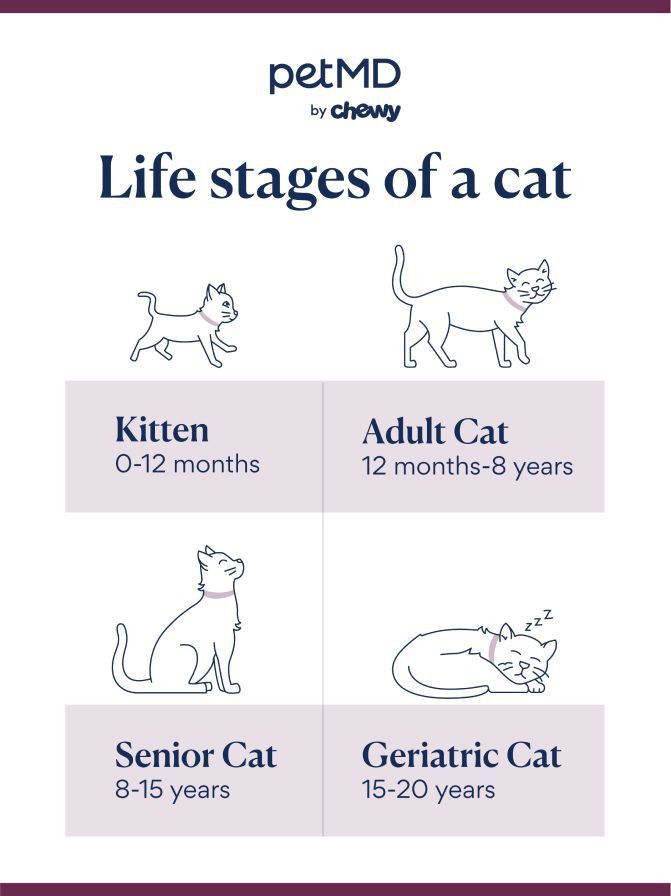Thanks to advancements in veterinary medicine, enhanced nutrition, and dedicated pet care, our feline companions are enjoying longer and healthier lives than ever before. As responsible cat owners, it’s our duty to ensure our beloved kitties reach their senior years in optimal health by providing tailored care at each stage of their lives.
If you’ve ever pondered about your cat’s age in human years or wondered, “what is the Average Life Expectancy Of A Cat?”, the answer is multifaceted. It largely depends on a collaborative effort between you and your veterinarian, focusing on your cat’s specific needs regarding nutrition, vaccinations, dental health, and environmental enrichment as they mature.
This article will delve into the average lifespan of cats, exploring the various factors that influence their longevity and offering practical advice on how to help your cat live a longer, healthier, and happier life.
Decoding the Average Lifespan of a Cat
Generally, the average cat lifespan falls between 13 to 17 years. Remarkably, some cats exceed this average, living for 20 years or even longer. The Guinness World Record for the oldest cat ever recorded is held by Creme Puff, who lived an astonishing 38 years!
Numerous elements contribute to a cat’s lifespan, and understanding these factors is crucial for responsible pet ownership. These key factors include:
- Nutrition: A complete and balanced diet is the cornerstone of a cat’s health, providing essential nutrients, vitamins, and minerals. Proper nutrition supports optimal organ function, a robust immune system, and maintaining a healthy body weight, all of which are vital for longevity.
- Lifestyle: A cat’s lifestyle has a direct and significant impact on their lifespan. Indoor cats typically live considerably longer than outdoor cats. This is primarily because indoor environments shield them from harsh environmental hazards and ensure they receive consistent preventive veterinary care.
- Preventive Care: Proactive and consistent preventive care is paramount. Cats who receive all recommended vaccinations and undergo routine health screenings, such as blood work, benefit from early disease detection and timely treatment. Regular preventive medications for parasites like fleas, ticks, and heartworms are also crucial in preventing debilitating and life-threatening illnesses, thereby contributing to a longer lifespan.
- Breed: Certain cat breeds are predisposed to longer lifespans compared to others. For example, Siamese cats are often cited for their longevity due to fewer breed-specific health issues, while larger breeds like Maine Coons may be prone to conditions related to their size, potentially affecting their lifespan.
- Mixed-breed cats often exhibit greater longevity than purebred cats. This phenomenon, known as hybrid vigor, results from a wider genetic pool, making them less susceptible to inherited health problems.
- While tabby is a coat pattern and not a breed, tabby cats are often noted for their impressive lifespan, sometimes reaching 15–20 years.
- Genetics: A cat’s genetic makeup plays a role in their predisposition to certain health conditions and diseases. Inherited conditions can unfortunately shorten a cat’s lifespan. Responsible breeding practices, including genetic testing, are essential to minimize the transmission of genetic health issues.
- Spaying/Neutering: Spaying or neutering your cat is a significant factor in extending their lifespan. Desexed cats have a significantly lower risk of developing reproductive cancers and other health issues associated with reproductive hormones, leading to a longer and healthier life.
 cat life stages; how long do cats live
cat life stages; how long do cats live
Indoor vs. Outdoor Cats: A Stark Contrast in Life Expectancy
The disparity in life expectancy between indoor and outdoor cats is significant. Outdoor cats, or those with substantial outdoor access, sadly have an average lifespan that is approximately half that of indoor cats. This reduced lifespan is attributed to the numerous dangers outdoor cats face daily:
- Infectious Diseases: Exposure to wildlife and other cats increases the risk of contracting infectious diseases, some of which can be fatal.
- Trauma: Outdoor cats are vulnerable to injuries from predators and vehicle accidents, both of which are major threats to their survival.
- Parasites: Outdoor environments expose cats to a higher burden of parasites, including fleas, ticks, and intestinal parasites, which can compromise their health and well-being.
While supervised outdoor activities, like leash walking or exploring secure enclosures, can offer enrichment for some cats, the vast majority thrive as indoor-only pets, particularly when provided with an appropriately stimulating and enriched indoor environment. Indoor cats benefit from protection from these external dangers, consistent access to nutritious food, and regular veterinary care, all contributing to a significantly longer average lifespan.
Navigating the Journey: Cat Life Stages and Longevity
As cats progress through life, they transition through distinct life stages, each with unique behavioral and health requirements. Understanding these stages is key to providing age-appropriate care and maximizing your cat’s lifespan.
Kitten (Birth to 1 Year): Building a Foundation for a Long Life
The kitten stage is a period of rapid growth and crucial learning. During this formative time, kittens learn to interact with their environment and develop fundamental behaviors.
While basic habits like litter box use and feeding are often instinctive, socialization and engaging in enriching play are crucial for behavioral development and setting the stage for a well-adjusted adult cat. Interactive play, such as using a cat laser pointer, provides both mental and physical stimulation, essential for healthy development.
Nutritionally, kittens require a diet specifically formulated to support growth. These diets are calorie-dense to fuel their rapid development into strong and healthy adults. Look for an Association of American Feed Control Officials (AAFCO) nutritional adequacy statement on food labels confirming it provides “complete nutrition for growing kittens.”
Kittenhood is also the critical period for initiating core vaccinations. Vaccines like FVRCP (feline viral rhinotracheitis, calicivirus, and panleukopenia), rabies, and FeLV (feline leukemia virus) are vital for protecting kittens from potentially fatal diseases. Spaying or neutering is typically recommended around 6 months of age, reducing the risks of certain cancers and undesirable behaviors like urine marking.
Young Adult (1–6 Years): Maintaining Peak Condition
Young adult cats are energetic and playful, having completed their physical growth. Their caloric needs decrease as they transition to adulthood, requiring a shift to adult cat food. Careful weight management during this stage is crucial in preventing future health problems like arthritis and diabetes.
Consistent preventive care remains essential. While young adults are generally robust, routine vaccinations and annual veterinary examinations are vital. Certain conditions, such as asthma and feline lower urinary tract disease (FLUTD), are more commonly diagnosed during these years. Early detection and intervention significantly improve long-term management outcomes. Baseline blood work during this period establishes a valuable reference for future health monitoring.
Mature Adult (6–10 Years): Adapting to Subtle Changes
Mature adult cats may begin to show subtle signs of slowing down, becoming less playful and potentially more sedentary. Behavioral changes, such as altered litter box habits or shifts in nighttime activity, may become noticeable. Some older cats might become more active at night and sleep more during the day, or previously meticulous cats may become less diligent about covering their waste or start urinating outside the litter box.
Providing accessible resources becomes important. Consider offering an uncovered litter box with low sides to accommodate senior cats, particularly those with mobility issues.
These changes can sometimes indicate underlying health issues like arthritis, cognitive dysfunction, or early kidney or digestive problems. Annual blood work is crucial for mature cats to monitor kidney, liver, and thyroid function for early detection of age-related changes. Pet owners should closely monitor grooming habits, hairball frequency, and weight fluctuations. Oral health becomes increasingly important, and dental cleanings, as recommended by a veterinarian, should be considered, especially if home dental care is challenging. Establishing a routine of tooth brushing with cat-friendly toothpaste and a suitable toothbrush is ideal for maintaining oral health and reducing the need for frequent professional cleanings.
Senior (10+ Years): Providing Specialized Care
The transition to the senior cat stage is variable. Some cats remain active and mobile well into their senior years, while others experience more age-related health challenges. For cats aged 10 and older, biannual veterinary checkups, including blood work and urine testing every six months, are generally recommended. Organ function can change rapidly in senior cats, making frequent monitoring crucial. Older cats are also more prone to developing high blood pressure, which can lead to serious complications like strokes and blindness. Blood pressure monitoring should be a routine part of senior cat checkups.
Senior cats often exhibit a more pronounced slowdown, which can be a sign of untreated arthritis pain. If not already on a joint supplement, consult your veterinarian about starting one, such as Nutramax Cosequin for Cats, to support joint health and mobility.
Empowering Longevity: How to Increase Your Cat’s Lifespan
While there’s no magic formula to guarantee immortality for our cats, proactive and responsible pet ownership can significantly contribute to a longer and healthier life. Here are key strategies to help maximize your cat’s lifespan:
- Stay Current on Vaccinations: Adhering to a veterinarian-recommended vaccination schedule, tailored to your cat’s lifestyle and risk factors, is vital for preventing serious and potentially fatal infectious diseases. Remember, even indoor cats require vaccinations.
- Spay or Neuter Early: Spaying or neutering your cat at a young age dramatically reduces the risk of life-threatening reproductive cancers and diseases, contributing significantly to a longer lifespan.
- Maintain Preventative Care: Cats are masters at concealing illness. Annual veterinary checkups and routine blood tests are indispensable for early disease detection. A strong veterinarian-client-patient relationship allows your vet to recognize subtle changes during examinations. Always communicate any changes in your cat’s behavior, no matter how minor they may seem.
- Adapt Your Cat’s Environment: As cats age, adjusting their environment to meet their changing needs is essential. Discuss joint supplements with your veterinarian if you observe signs of slowing down or stiffness. Consider providing an orthopedic bed to offer enhanced cushioning and support for aging joints.
By understanding the factors influencing cat lifespan and proactively implementing these care strategies, you can play a vital role in helping your feline companion enjoy a long, healthy, and fulfilling life by your side.
WRITTEN BY
Jamie Lovejoy, DVM
Veterinarian
Dr. Jamie Lovejoy graduated from Tufts Cummings School of Veterinary Medicine in 2012 after an undergraduate degree in Marine Biology. …


